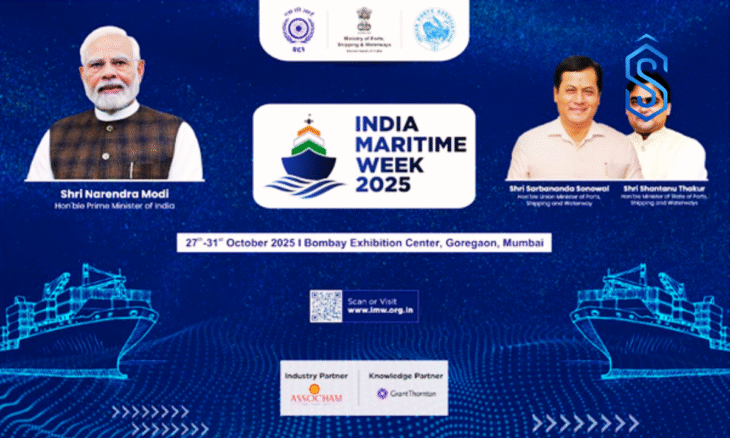Mumbai: India’s maritime sector, responsible for nearly 95% of the country’s EXIM trade by volume and 70% by value, is preparing for a green shipping transition as global regulations push for decarbonization of international shipping.
Currently reliant on hydrocarbon fuels, the sector faces increasing pressure to adopt clean fuel alternatives to meet international greenhouse gas (GHG) reduction commitments.
IMO Framework to Drive Green Shipping Transition
The International Maritime Organization (IMO) has introduced several measures over the last decade, including the Energy Efficiency Design Index (EEDI), Energy Efficiency Existing Ship Index (EEXI), Ship Energy Efficiency Management Plan (SEEMP), and the Carbon Intensity Indicator (CII).
Also Read: Shipbuilding Clusters and Port Projects Announced Under INR 66000 Crore MoUs
In 2023, the IMO unveiled its revised GHG reduction strategy, aiming for net-zero GHG emissions from international shipping by 2050.
In April 2025, IMO approved the Net-Zero Framework Regulations (NZF), which mandate progressive cuts in the lifecycle carbon intensity of fuels used by ships above 5,000 GT.
These rules include the Greenhouse Gas Fuel Intensity (GFI) compliance mechanism, which measures carbon dioxide equivalent emissions per unit of fuel energy.
Non-compliance will result in financial contributions to the IMO’s Net-Zero Fund, with penalties set at USD 380 per tonne of CO₂ equivalent for base targets and USD 100 for direct compliance targets. The regulations are expected to be adopted in October 2025 and come into force from 2028.
Global Climate Rules Reinforcing Green Shipping Transition
The European Union (EU) has already implemented similar measures with its Emission Trading System (ETS) and FuelEU Maritime regulation. The ETS requires ships to purchase emission allowances covering 70% of CO₂ emissions from 2025 and 100% from 2026.
Also Read: E-Commerce Export Hubs to Empower Indian SMEs with Cost-Effective Cross-Border Logistics
FuelEU Maritime mandates progressive reductions in GHG fuel intensity, aligning closely with IMO’s GFI mechanism. These frameworks are driving adoption of biofuels and zero/near-zero emission fuels such as green methanol and green ammonia.
India’s Opportunity in Green Shipping
For India, the green shipping transition presents a major opportunity. With abundant renewable resources, the country can produce green hydrogen, which can be converted into green methanol and green ammonia – fuels critical to the future of global shipping.
The National Green Hydrogen Mission has identified Kandla (Deendayal Port Authority), Tuticorin (V.O. Chidambaranar Port Authority), and Paradip (Paradip Port Authority) as initial hubs for green hydrogen production and bunkering facilities.
Alongside, large-scale private sector projects are under development, reinforcing India’s position as an emerging clean energy exporter.
Skilling Seafarers for the Green Shipping Transition
Transitioning to new fuels also requires training and skilling. The IMO is developing model courses on safe handling of green methanol and green ammonia to equip seafarers for the shift.
India’s Path Toward a Sustainable Maritime Future
With global adoption of the IMO’s NZF regulations and rising demand for zero/near-zero fuels, India is strategically investing in fuel production, bunkering, and logistics infrastructure. By aligning with the AmritKaal Vision 2047 and its net-zero goals, India aims to position itself as a global hub for green fuel supply, driving a sustainable future for international shipping.






